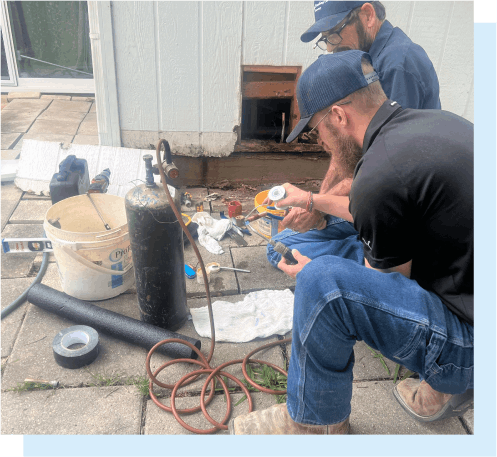Choosing the right kitchen faucet might seem like a small task, but it has a big impact on your kitchen’s functionality and style. With so many options available, making the best choice can be overwhelming. Your kitchen faucet is something you use daily, so it’s important to pick one that fits both your needs and your kitchen’s decor. This guide will cover everything you need to make the right choice for your kitchen faucet.
Understanding Different Faucet Types
Selecting the right kitchen faucet starts with knowing the different types available. This helps you match the faucet to your needs and kitchen layout. There are several popular models, each offering distinct features and benefits.
The pull-down faucet is a favorite for many homeowners. It has a spray wand that pulls straight down into the sink, making it easy to wash large pots and pans or clean the sink itself. This type is great for deep sinks and busy kitchens.
Pull-out faucets are similar, but the spray wand pulls out toward you instead of down. This style is handy for limited sink space and performing tasks outside the sink area, like filling pots on the counter.
Another option is the single-handle faucet. It’s ideal for small sinks or minimalist designs because it takes up less counter space and is simple to use. You move the handle side to side to control temperature and up and down for water flow.
Finally, touchless faucets add convenience with motion sensors that turn the water on and off. These are perfect for reducing water waste and keeping the faucet free from fingerprints and grime, and they are ideal for families or avid cooks.
Considerations for Faucet Features
When choosing a kitchen faucet, consider important features that make your kitchen tasks easier and more efficient. One key feature is the spout height and reach. Ensure it’s high enough to fit your largest pots and has a reach that covers the entire sink area.
Spray functions are another essential feature. Many modern faucets come with multiple spray settings, including a powerful spray for cleaning and a gentle stream for everyday use. Having a flexible hose with these settings provides added convenience.
Water efficiency should also be on your radar. Look for faucets with a low-flow rate to conserve water without sacrificing performance. Faucets labeled with WaterSense certification meet the Environmental Protection Agency’s criteria for water conservation.
If you have children or elderly family members, consider a faucet with easy-to-use handles or touch-free operation. Faucets with a single lever or touchless models are user-friendly and reduce the risk of scalding by maintaining a consistent temperature setting.
Lastly, some kitchen faucets include built-in filtration systems. These systems provide clean, filtered water straight from the tap, which is handy for cooking and drinking. This feature saves space on your counter and ensures you always have access to fresh water.
Materials and Finishes: What to Look For
Choosing the right material and finish for your kitchen faucet is crucial for durability and style. The material affects the faucet’s lifespan, while the finish impacts its look and ease of cleaning. One popular material is stainless steel, known for its durability and resistance to rust and stains. It’s a great match for modern kitchens and busy households.
Another common material is brass, which is sturdy and long-lasting. Brass faucets are usually coated with a finish to prevent tarnishing and corrosion. They often come in classic styles, making them perfect for traditional or vintage kitchen designs.
When it comes to finishes, chrome is a common choice. It’s shiny, easy to clean, and matches various kitchen decors. However, it can show water spots and fingerprints more than other finishes. Brushed nickel offers a softer, brushed look that’s less prone to showing smudges or spots. This finish is versatile and complements many kitchen styles.
Matte black finishes are gaining popularity for their sleek, modern look. They conceal fingerprints and water spots well, making them low-maintenance. If you want a bold centerpiece for your kitchen, this might be the finish for you.
Steps to Ensure Proper Installation
Proper installation of your kitchen faucet is essential to avoid leaks and ensure it functions well. Firstly, gather all necessary tools, such as a basin wrench, plumber’s tape, and adjustable pliers. Read the manufacturer’s instructions carefully to understand the specific steps for your faucet model.
Start by turning off the water supply under the sink. Disconnect the existing faucet by loosening the nuts holding it in place. Remove the old faucet and clean the area to ensure a smooth installation surface.
Place the new faucet into the mounting holes and secure it with nuts and washers. Make sure it’s centered and tightened properly to avoid wobbling. Connect the water supply lines to the faucet’s tailpieces, ensuring they are tight to prevent any leaks.
Once everything is in place, turn the water supply back on and test the faucet. Check for any leaks around the connections and make adjustments if necessary. If water flows properly and there are no leaks, your installation is complete.
Always follow the manufacturer’s instructions and consider consulting a professional if you’re unsure about any step. Proper installation ensures your faucet remains functional and problem-free for years.
Conclusion
Selecting the right faucet is not just about looks; it’s about finding a reliable and efficient tool for your kitchen. With the right information and careful consideration, you can make a choice that you’ll be happy with for years.
If you need help with your faucets in San Antonio or have any other plumbing needs, George Plumbing Co., Inc. is here to help. Contact us today to ensure your kitchen faucet is installed correctly and enjoy a hassle-free kitchen experience.




